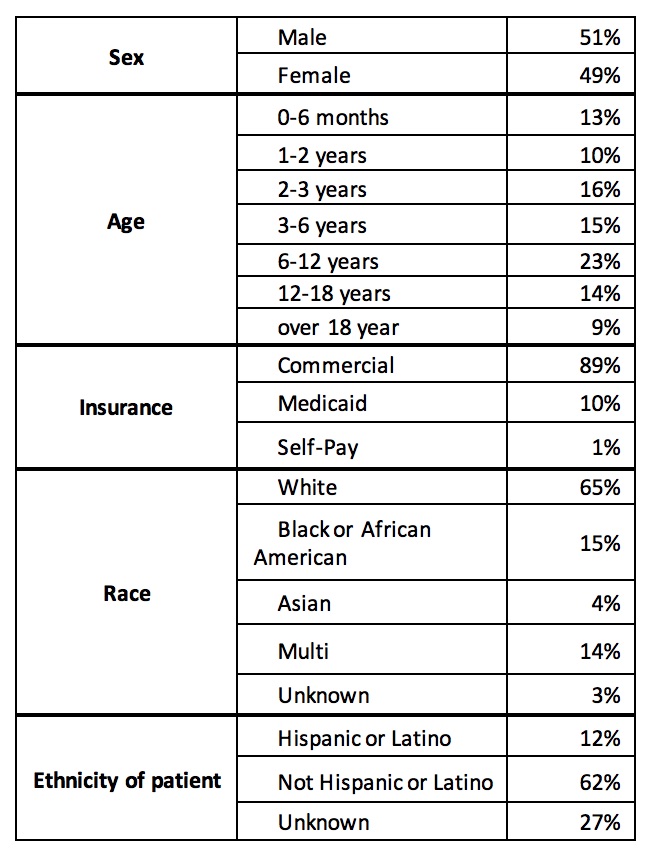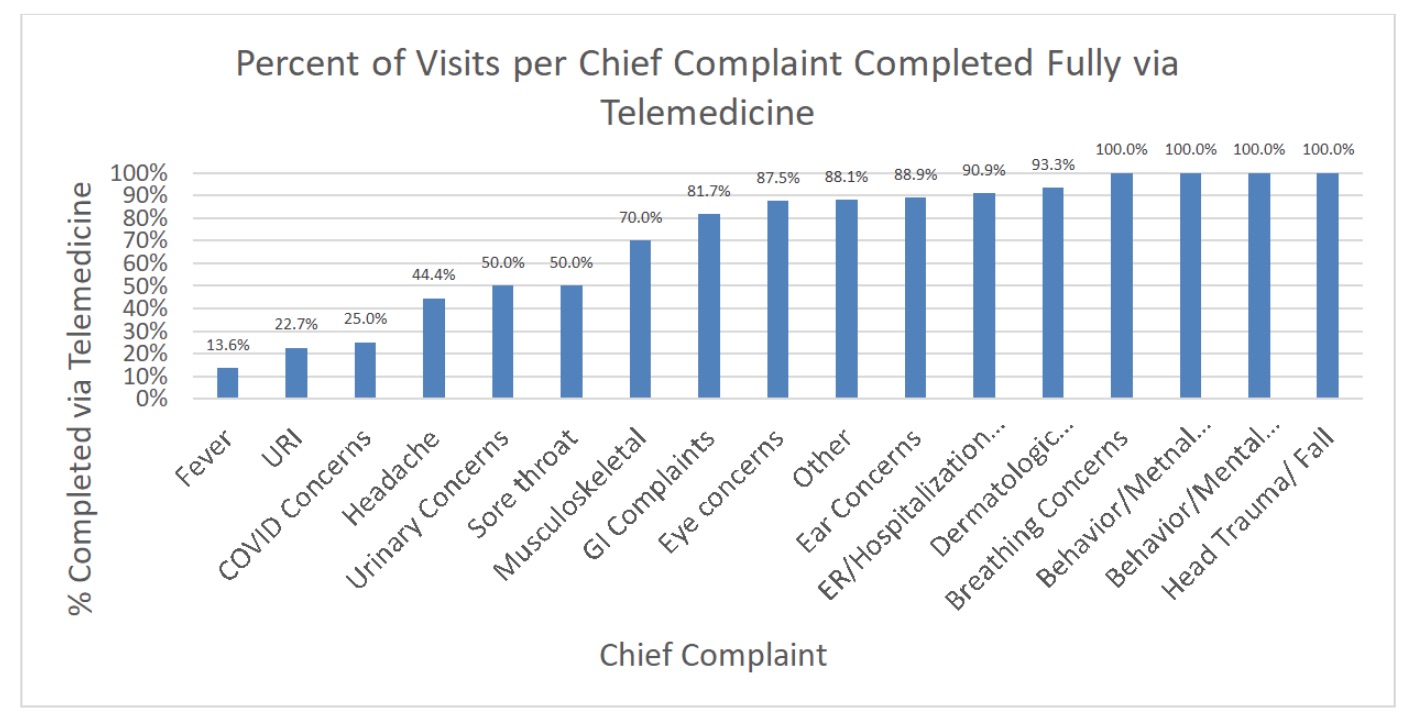General Pediatrics: Primary Care/Prevention
Category: Abstract Submission
General Pediatrics III
176 - Use of Telemedicine for Acute Care Concerns in Primary Care during COVID19 Pandemic: Implications for Future Use
Sunday, April 24, 2022
3:30 PM - 6:00 PM US MT
Poster Number: 176
Publication Number: 176.316
Publication Number: 176.316
Kristina Kissiova, Children's National Health System, Washington, DC, United States; Meghan Carter, Children's National Health System, Washington, DC, United States; Tara Mamdouhi, Children's National Health System, Washington, DC, United States; Christina Driskill, Children's National Health System, Washington, DC, United States; Ellen K. Hamburger, Children's National Hospital, WASHINGTON, DC, United States

Kristina Kissiova, MD
Pediatric Resident
Children's National Health System
Washington, District of Columbia, United States
Presenting Author(s)
Background: The increased use of telemedicine during the COVID19 pandemic provided much needed access to care for patients and served as a useful tool to remotely link doctors and patients. Some of its many advantages include enhanced medical homes, reduced health care costs, and less crowding in offices and emergency departments. While advantages of this modality have emerged, optimal utilization of telemedicine for pediatric acute care visits has yet to be described.
Objective: The objective of this study was to describe outcomes of telemedicine encounters for acute care visits in a primary care pediatric practice. The study examined characteristics of visits completed without referral for subsequent in-person visit.
Design/Methods: A retrospective chart review of 638 telemedicine visits conducted by 21 medical providers in one primary care practice in Washington, D.C. was completed for visits in October and November 2020. Acute care visits for patients ages 0-21 were evaluated; telehealth well child checks and follow-up visits were excluded.
Results: Of the visits examined, 60% (384/638) were completed solely over telemedicine. The most common chief complaints (CC) were URI (n=119/18.7%), Dermatologic (104/16.3%), Gastrointestinal (82/12.9%), COVID-related concerns (76/11.9%), and Fever (66/10.3%). Of the most common CC, Dermatologic and GI concerns were most frequently completed with telemedicine (97/93.3% and 67/81.7% respectively). Of the top CC, fever and URI were the least likely to be completed via telemedicine with only 9/13.6% and 27/22.7%, predominantly because of the recommendation to present for COVID testing. Less common CC that were most frequently completed over telemedicine included: breathing concerns (5/5, 100%), behavior/mental health acute concerns (24/24, 100%), head trauma or falls (7/7, 100%), ER/Urgent Care follow ups (10/11, 90.9%), ear concerns (8/9, 88.9%), and eye concerns (21/24, 87.5%) (Table 2). For patients who did not get referred in for their telemedicine complaint, 3% presented in person for worsening symptoms (Table 3). Of patients referred for office visits from telemedicine, 90% were seen in the office within 48 hours (Table 3).Conclusion(s): The majority (60%) of telemedicine visits were successfully completed via telemedicine without in-person follow up visits or COVID testing. Patients with fever and URI symptoms were least likely to be completed on telemedicine. A wide range of CC were frequently completed without in office follow up. These early findings provide insight into the utility of telehealth in the primary care setting for a broad array of urgent concerns.
Patient Demographics
Number of Visits per Chief Complaint Completed Fully via Telemedicine
Objective: The objective of this study was to describe outcomes of telemedicine encounters for acute care visits in a primary care pediatric practice. The study examined characteristics of visits completed without referral for subsequent in-person visit.
Design/Methods: A retrospective chart review of 638 telemedicine visits conducted by 21 medical providers in one primary care practice in Washington, D.C. was completed for visits in October and November 2020. Acute care visits for patients ages 0-21 were evaluated; telehealth well child checks and follow-up visits were excluded.
Results: Of the visits examined, 60% (384/638) were completed solely over telemedicine. The most common chief complaints (CC) were URI (n=119/18.7%), Dermatologic (104/16.3%), Gastrointestinal (82/12.9%), COVID-related concerns (76/11.9%), and Fever (66/10.3%). Of the most common CC, Dermatologic and GI concerns were most frequently completed with telemedicine (97/93.3% and 67/81.7% respectively). Of the top CC, fever and URI were the least likely to be completed via telemedicine with only 9/13.6% and 27/22.7%, predominantly because of the recommendation to present for COVID testing. Less common CC that were most frequently completed over telemedicine included: breathing concerns (5/5, 100%), behavior/mental health acute concerns (24/24, 100%), head trauma or falls (7/7, 100%), ER/Urgent Care follow ups (10/11, 90.9%), ear concerns (8/9, 88.9%), and eye concerns (21/24, 87.5%) (Table 2). For patients who did not get referred in for their telemedicine complaint, 3% presented in person for worsening symptoms (Table 3). Of patients referred for office visits from telemedicine, 90% were seen in the office within 48 hours (Table 3).Conclusion(s): The majority (60%) of telemedicine visits were successfully completed via telemedicine without in-person follow up visits or COVID testing. Patients with fever and URI symptoms were least likely to be completed on telemedicine. A wide range of CC were frequently completed without in office follow up. These early findings provide insight into the utility of telehealth in the primary care setting for a broad array of urgent concerns.
Patient Demographics

Number of Visits per Chief Complaint Completed Fully via Telemedicine

